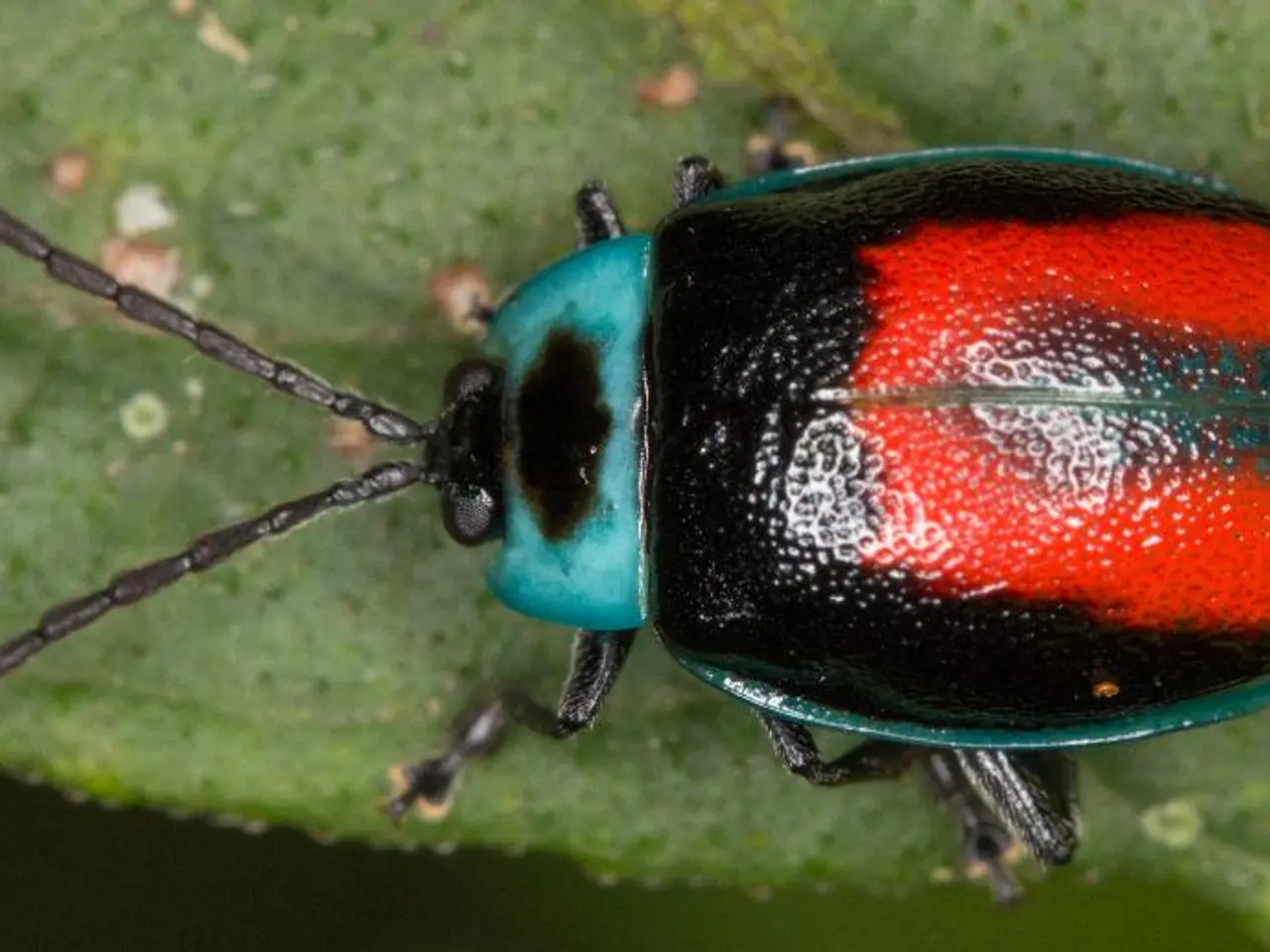Eradicating Cucumber Beetles: A Step-by-Step Guide
Cucumber beetles are a common pest that can cause significant damage to cucurbit plants, including cucumbers, melons, and squash. These small, yellow-green beetles, either striped (with three black stripes) or spotted (with 12 black spots), feed on leaves, flowers, stems, and fruits, creating small, oval or irregular holes. They can also transmit bacterial wilt, a serious disease with no cure.
Identifying Cucumber Beetles
To identify cucumber beetles on cucurbit plants, look for these small insects. Striped cucumber beetles are about 1/5 inch long with bright yellow wings featuring three black stripes, while spotted cucumber beetles are similar in size with 12 black spots on their wings. They can be found on the plants, feeding above ground, or pupating underground, where larvae feed on roots unseen.
Controlling Cucumber Beetles
Controlling cucumber beetles requires a combination of strategies. Here are some methods to consider:
- Hand-pick beetles early: Hand-picking beetles, especially before the third true leaf, can help reduce their population. Squash them or drop them into soapy water to eliminate them.
- Floating row covers: Use floating row covers to protect plants until they begin flowering. This physical barrier can help exclude beetles.
- Later planting: Plant cucurbits later in the season, such as mid-June, to avoid peak cucumber beetle emergence in late spring.
- Organic insecticides: Apply organic insecticides like neem oil or insecticidal soap at dusk to avoid harming pollinators.
- Encourage natural predators: Ground beetles, tachinid flies, and ladybugs are natural predators of cucumber beetle larvae and adults. Encouraging these beneficial insects can help control the beetle population.
- Yellow sticky traps: Use yellow sticky traps to attract and trap adults, as cucumber beetles are attracted to yellow.
- Garden hygiene: Maintain garden hygiene by removing diseased plants promptly and garden debris at the end of the season to reduce overwintering sites.
- Mulching: Mulching around plants can help deter egg-laying in the soil and suppress weeds that might host pests.
Preventing Damage
Preventing damage from cucumber beetles involves several strategies:
- Crop rotation: Practice crop rotation annually to disrupt cucumber beetle life cycles and reduce infestation risk.
- Close monitoring: Early detection through close monitoring allows prompt intervention before large population increases.
- Healthy plants: Keep plants healthy with adequate water and nutrients to better tolerate pest damage.
Combining these methods in an integrated pest management approach yields the best results in managing cucumber beetles and preventing serious damage to cucurbit crops.
Trap Crops and Disposal
Trap crops can be planted to attract cucumber beetles away from main cucurbit crops, allowing for their disposal and reduction of the pest population. Once a sizable number of beetles shows up on the trap crops, they can be sprayed with an organic pesticide, stuffed into garbage bags, or burned.
When plants show signs of bacterial wilt, they should be removed and discarded immediately. Females lay eggs around the base of the host plants, and larvae hatch several weeks later to feed on the roots. If a plant exhibits symptoms of bacterial wilt and no other causes appear to be present, remove and dispose of the infected plant immediately.
By following these guidelines, gardeners can effectively manage cucumber beetles and protect their cucurbit crops from damage.
Organic insecticides like neem oil or insecticidal soap can be used to control cucumber beetles, giving preference to dusk applications to avoid harming pollinators. The use of floating row covers can provide a physical barrier, protecting plants until they start flowering.
Ground beetles, tachinid flies, and ladybugs are natural predators of cucumber beetle larvae and adults, so encouraging these beneficial insects can help control the beetle population. Yellow sticky traps can be employed to attract and trap adult cucumber beetles, as they are attracted to yellow.
Maintaining garden hygiene is crucial, as removing diseased plants promptly and garden debris at the end of the season helps reduce overwintering sites for the cucumber beetles. Mulching around plants can help deter egg-laying in the soil and suppress weeds that might host pests.
Practicing crop rotation annually can disrupt cucumber beetle life cycles, reducing infestation risk. Close monitoring grants early detection of cucumber beetle populations, allowing for prompt intervention before large population increases.
Gardeners can use trap crops to divert cucumber beetles away from main cucurbit crops and then dispose of them or spray them with an organic pesticide. Once a sizable number of beetles appear on the trap crops, immediate action is required. If plants exhibit signs of bacterial wilt, they should be removed and discarded immediately, as cucumber beetles can transmit this disease with no cure.




